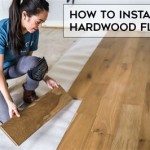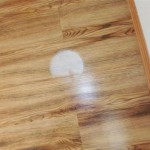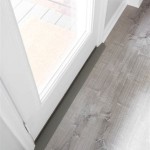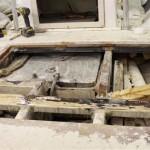Steam Cleaning Laminate Wood Flooring: A Comprehensive Guide
Laminate wood flooring offers an attractive and cost-effective alternative to solid hardwood, providing a durable surface that mimics the look and feel of natural wood. However, maintaining its appearance requires proper cleaning techniques. Steam cleaning is often considered a viable option, but it demands careful consideration due to the potential for moisture damage. This article provides a comprehensive guide to steam cleaning laminate flooring, outlining the best practices, potential risks, and alternative cleaning methods.
The appeal of laminate flooring lies in its layered construction. A high-density fiberboard (HDF) core provides the structure, while a decorative photographic layer creates the wood-like appearance. A transparent wear layer protects the design from scratches and fading. The HDF core is susceptible to water damage, making moisture control during cleaning paramount. Improper steam cleaning can lead to swelling, warping, and delamination of the flooring.
Understanding the Risks of Steam Cleaning Laminate
The primary concern with steam cleaning laminate flooring is the potential for moisture penetration. While steam cleaners use heat to sanitize and loosen dirt, excessive moisture can seep into the seams between planks and penetrate the HDF core. This can lead to a range of problems, including:
*Swelling and Warping:
The HDF core absorbs moisture, causing it to expand and deform. This can result in visible swelling along the seams and an uneven floor surface. *Delamination:
Repeated exposure to moisture can weaken the adhesive bonds between the layers of the laminate flooring. This can lead to the decorative layer separating from the core, a condition known as delamination. *Mold and Mildew Growth:
Trapped moisture provides a breeding ground for mold and mildew, which can compromise indoor air quality and cause health problems. *Voiding the Warranty:
Many laminate flooring manufacturers explicitly state that steam cleaning voids the warranty. Using a steam cleaner could invalidate any claims for future repairs or replacements.Despite these risks, steam cleaning can be performed safely on some laminate floors if done correctly and infrequently. The key is to minimize moisture exposure and ensure the floor dries quickly.
Safe Steam Cleaning Techniques for Laminate Flooring
Before proceeding with steam cleaning, it is crucial to consult the manufacturer's guidelines for the specific laminate flooring installed. If the manufacturer explicitly prohibits steam cleaning, it is best to avoid the method altogether. If steam cleaning is permitted, the following techniques can minimize the risk of damage:
*Use a Dry Steam Mop:
Opt for a steam mop that produces "dry steam," which contains minimal moisture. These mops typically feature adjustable steam settings that allow for greater control over moisture output. *Low Steam Setting:
Always use the lowest steam setting possible. The goal is to sanitize the floor without saturating it with moisture. *Microfiber Pad:
Attach a clean microfiber pad to the steam mop. Microfiber pads are highly absorbent and help to lift dirt and grime from the floor surface. *Continuous Motion:
Move the steam mop continuously across the floor. Avoid holding it in one spot for too long, as this can concentrate moisture in that area. *Overlap Passes:
Overlap each pass by a few inches to ensure complete coverage and prevent streaking. *Dry Immediately:
If any moisture remains on the floor after steam cleaning, use a clean, dry microfiber cloth to wipe it up immediately. *Ventilate the Room:
Open windows and doors to improve ventilation and encourage faster drying. Using fans can also help to circulate air and speed up the drying process. *Test in an Inconspicuous Area:
Before cleaning the entire floor, test the steam mop in an inconspicuous area, such as a closet or under furniture. This will allow for assessment of the flooring's reaction to the steam. Observe the area for any signs of swelling or discoloration over the next 24-48 hours. *Vacuum First:
Prior to employing steam, vacuum the flooring to remove any loose debris, such as dirt, dust, and hair. This step prevents the steam from simply spreading these materials around and allows it to focus on deeper cleaning.It is important to understand that even with these precautions, steam cleaning laminate flooring always carries some degree of risk. Regular maintenance using alternative cleaning methods is generally recommended to prolong the life and appearance of the floor.
Alternative Cleaning Methods for Laminate Flooring
Several alternative cleaning methods are safer and more effective for routine laminate floor maintenance. These methods minimize moisture exposure and reduce the risk of damage:
*Dry Mopping:
Regular dry mopping with a microfiber mop is an excellent way to remove dust, dirt, and debris from laminate flooring. This simple task can significantly reduce the need for more intensive cleaning methods. *Damp Mopping:
Damp mopping with a pH-neutral laminate floor cleaner is a safe and effective way to remove dirt and grime. Always use a lightly dampened mop and avoid saturating the floor. Ensure the mop is wrung out thoroughly to prevent excess moisture. *Spot Cleaning:
For spills and stains, spot cleaning is the best approach. Use a soft cloth dampened with a pH-neutral cleaner to wipe up the spill immediately. Avoid using abrasive cleaners or scrub brushes, which can damage the wear layer. *Homemade Cleaning Solution:
A mixture of water and a small amount of white vinegar can be used as a safe and effective cleaning solution for laminate floors. The vinegar helps to cut through grease and grime without leaving a residue. Use approximately ¼ cup of white vinegar per gallon of water. *Specialized Laminate Floor Cleaners:
Numerous commercial laminate floor cleaners are specifically formulated to protect and maintain laminate flooring. These cleaners are typically pH-neutral and designed to minimize moisture absorption. Always follow the manufacturer's instructions when using these products.By adopting these alternative cleaning methods, homeowners can maintain the beauty and longevity of their laminate flooring without the risks associated with steam cleaning. Regular maintenance and prompt attention to spills and stains are key to preserving the floor's appearance and preventing damage.
In summary, while steam cleaning laminate flooring is possible, it should be approached with caution and only when absolutely necessary. Understanding the risks involved and following the recommended techniques can help minimize the potential for damage. Alternative cleaning methods are generally safer and more effective for routine maintenance, preserving the beauty and longevity of laminate floors for years to come.
Proper maintenance ultimately depends on the specific type of laminate flooring, the level of foot traffic, and the individual homeowner's cleaning preferences. Careful consideration of these factors will ensure the floor remains attractive and durable for many years.

Steam Cleaning Wood Floors More Like Scalding Them Rosebud

Can You Damage Your Floor With A Steam Mop

How To Clean Laminate Floors The Home Depot

How To Clean Laminate Floors The Home Depot

Deep Cleaning Your Laminate Floors A Step By Guide

Maintaining Wood Floors Right Made Easy Hallmark

Can You Damage Your Floor With A Steam Mop

Steam Cleaning Wood Floors More Like Scalding Them Rosebud

How To Clean Laminate Floors Like The Pros Bis International

How To Clean Laminate Flooring Factory Direct
Related Posts








